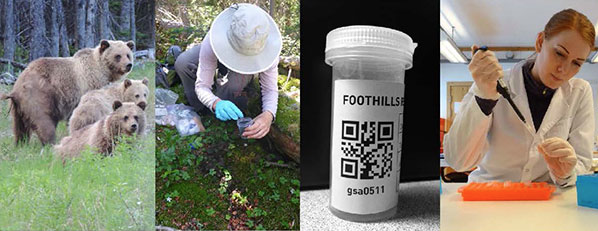This is the final report for the Collecting Scat with Citizen Science to Monitor Grizzly Bear Populations project.
Summary
Projects that involve citizen scientists are burgeoning, particularly in ecology and the environmental sciences. A significant advantage of citizen science is that it offers a way to collect information across large spatial extents that would otherwise not be economically feasible. In North America, traditional non-invasive hair-based DNA methods that have been used to estimate grizzly bear abundance and distribution remain too costly for long-term monitoring. It has been recognized that a citizen science based approach similar to that used to monitor European brown bear populations may offer a cost-effective solution for Alberta. However, spatial and temporal heterogeneity in detection probabilities are inherent challenges with citizen science, which can lead to lead to imprecise estimates that question the utility of the results for management. Strong sampling designs are very important in these types of projects. New projects involving citizen science should first evaluate potential study designs to determine the amount of volunteer effort that is needed and how data should be collected to ensure acceptable data quality relative to the goal and precision of population estimates.
The primary objectives of this project were to:
- develop and test a non-invasive scat-based DNA approach for estimating grizzly bear abundance and distribution that engages citizens ― particularly hunters and trappers ― in the collection of scientific information. Our second objective was to
- compare estimates of grizzly bear abundance and distribution from scat-based DNA methods to estimates from hair-based DNA methods, and
- evaluate the costs and benefits of scat-based and hair-based genetic inventories to further assess the value of engaging citizens in grizzly bear population monitoring in Alberta.







